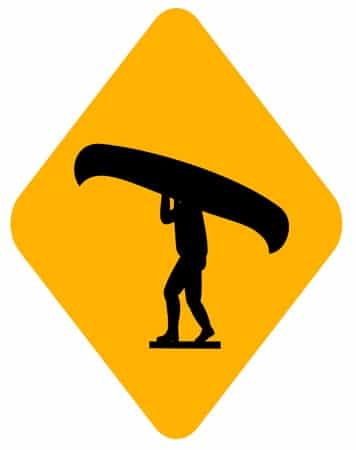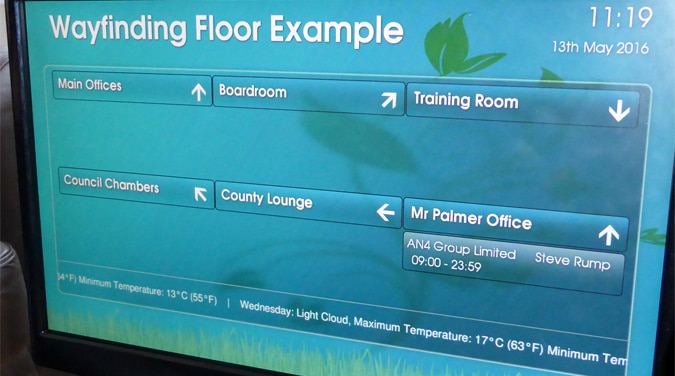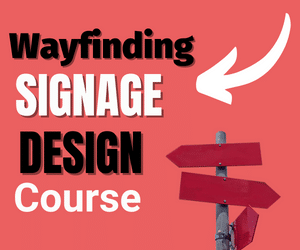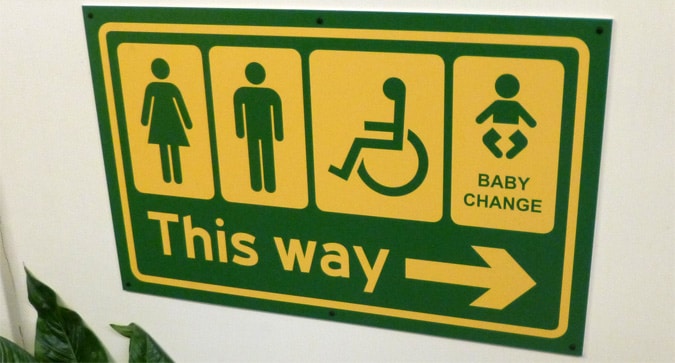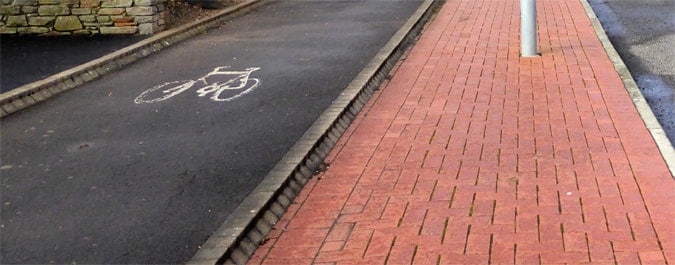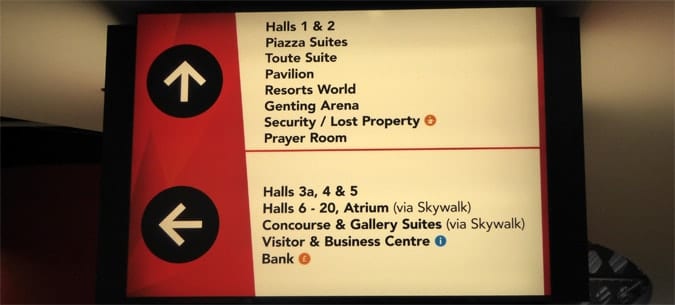Last Updated on June 19, 2024
You might not at first think of cruise ships when thinking about wayfinding, because of the confined nature of cruise travel. Isn’t everything controlled, with little need for us to have to worry about finding our way?
On the contrary, cruise ships make for a fascinating case study, given that the need to move sometimes up to three thousand people onto a massive floating village means that moving people safely, making sure they have a positive experience and can find their way, is a challenge which involves great planning.
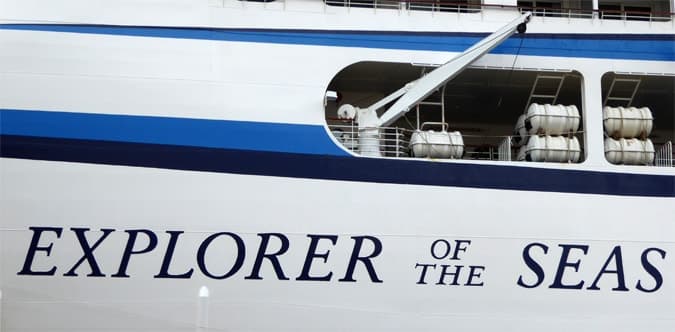
Cruising, of course, also tends to involve navigation from the point of view of the crew.
Table of Contents
Wayfinding on Cruise Ships
The ship itself needs to be navigated safely and to various locations, whilst the passengers themselves also have the task to find their way around the ports of call.
Wayfinding is very central, in other words, to cruise travel.

With thirteen decks and carrying close to three thousand passengers, guiding people successfully around this large boat is vital in the end-user experience.
Part of the fun in the first few days on such a boat can be exploring all corners of the ship, walking around without a specific goal, just to learn the way and to enjoy finding new things.
After a few days and once the focus goes on the ports of call, the idea of still not being familiar with the boat can become less fun for many people.
A differentiation also needs to be made between crew and passenger areas in terms of cruise ship wayfinding.
Passengers rarely get to see all of the boat and only have access to those front-stage areas which are designed specifically for them.
There is a limit to the locations on a cruise ship which you need to remember, i.e. your own cabin (and maybe that of friends or family) are the only cabin locations you will ever need to be able to navigate to.
The customer wayfinding experience is, in other words, contained and restricted to these front stage areas or what some social scientists would term ‘performance areas’.
By this, they mean the areas of interaction between the customers and the performers (in this case the cruise line staff).
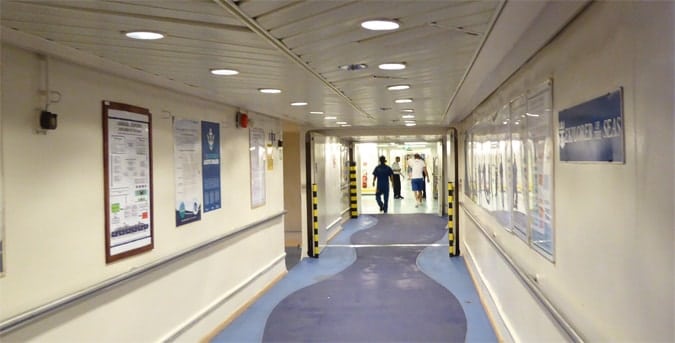
For crew/staff, depending on the role of the staff member, the areas they will need to access vary greatly to those of the passengers.
A receptionist, for example, will often share a cabin with one other person on the lower deck in the crew-only area and they will have access to their own crew bar, meeting area, will need to know where the crew dining area is, and so on.
For many staff, there is never a need to go anywhere near the passenger cabins.
For cabin stewards, their familiarity with the passenger areas soon negates any direction issues.
Digital Wayfinding System On-Board
Royal Caribbean has invested a significant amount of money specifically on technologies to introduce a wayfinding system on their entire fleet of boats which, from my own experience, I can say make it really quite easy to find your way around their boats.
See the video above to view Valeria trying out one of their new interactive touch screens. The cruise company have also introduced what they like to call ‘Royal IQ‘
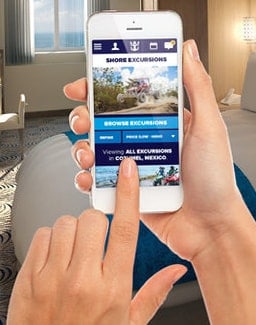
The use of technology is an important one in how it helps to direct the three thousand passengers (when full) through all stages of the process. Cruise travelers have a number of wayfinding and navigational challenges which include:
- Finding the cruise port parking
- Navigating to the terminal
- Getting through the security and boarding process
- Learning their way around the boat
- Successfully navigating the ports of call and in a specified time period.
Technology will also need to work hand-in-hand with non-technological wayfinding aids, for a number of reasons, and this includes in a cruise situation.
Someone recently asked me if signage and non-technological wayfinding aids were not outdated, given the mobile technologies which are now available.
They have a point, but technology will only ever have a certain percentage use in real-world wayfinding and this is because of several reasons:
- Using mobile phones can be very expensive when used abroad.
- Technology solutions are often and always will be too expensive compared to being able to use signage in simple and non-changeable environments. By non-changeable, I, mean that a cruise ship deck plan, for example, once the ship is built, is very unlikely to change for many many years. In an airport, on the other hand, the airlines allocated to specific check-in desk areas can change often.
- Serious problems are likely to exist in the future if everyone is walking with their heads down and they use their phones and it is already a cause of many accidents (read about the mobile walking issues).
- Technology does not always provide the best user experience, i.e. a human experience and one which will always generate the best perceived overall trip experience for the person concerned. The use and inclusion, for example, of real people for offering help and guidance in route-finding will in the future be a key factor in differentiating how travel companies work towards user ‘Level of Service’ levels.
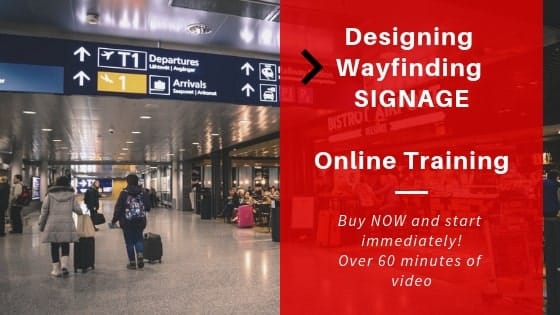
Technologies, such as those invested in by Royal Caribbean, are certainly helping and were very useful on my recent trip with them to the Canary Islands.
They were limited though in the need for them.
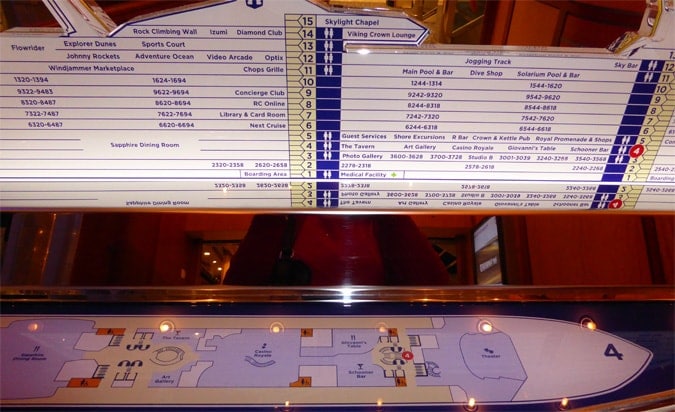
Safety and Security
One of the absolute key issues with route-finding on a cruise ship, as I mentioned in the P&O study, becomes even more important than on land-based locations, because of the isolation which being in the middle of the ocean obviously brings.
The boat itself has to have a fire meet-up point, the fire service, and provide all of the solutions for navigation within its own space, during emergencies.
Most, if not all, cruise ships provide you with a run-through of the emergency procedure when boarding.
From my own experience, the quality of the first-day muster drill’ varies quite greatly between cruise lines.
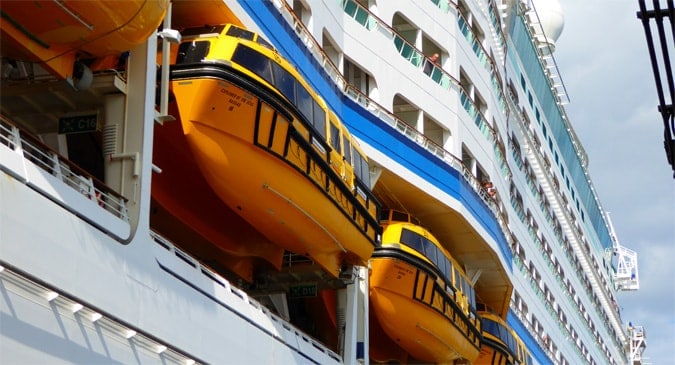
Whilst my experience on the ‘Explorer of the Seas’ was one of slight chaos for the muster drill, the P&O experience I had, on the other hand, was supremely better.
P&O made us go to the actual muster points, had us actually try on the life vest ourselves and staff seemed sure and well organized.
Whether this emergency wayfinding is needed in reality is one question, but certainly, the confidence and organization on the first day of a cruise during the muster drill is a window of opportunity for cruise lines to instill confidence in the passengers.
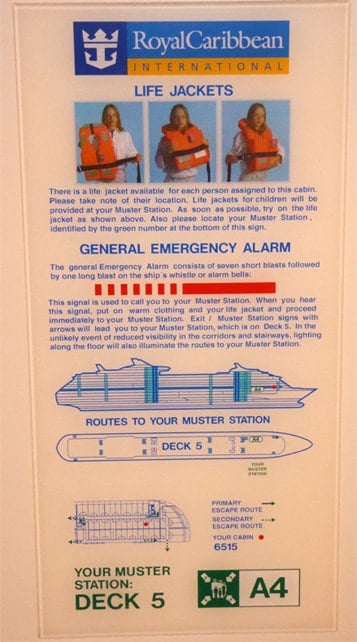
Navigating into Port and Pilots
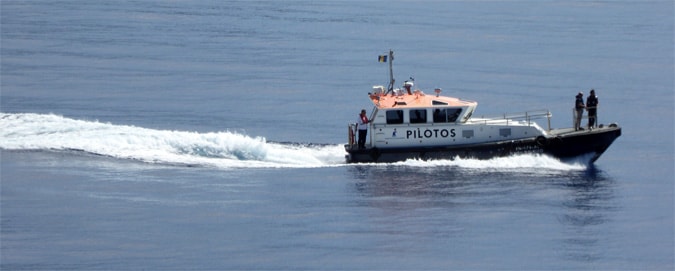
Successful wayfinding and navigation is also something that is key for the captain and crew, as well as for the passengers, given that there are different route-finding processes going on simultaneously on a cruise.
Whilst the passengers are trying to find their way on the boat, the captain also has to guide the boat in such as way as to accommodate local tides and other obstacles.
Each port has its own local pilot (Piloto in Spain) and this sea pilot as it were, is an expert in knowing the waters and tides within his or her specific port.
The pilot usually boards the cruise ship and then helps the captain and crew to then safely guide the boat to the local port.
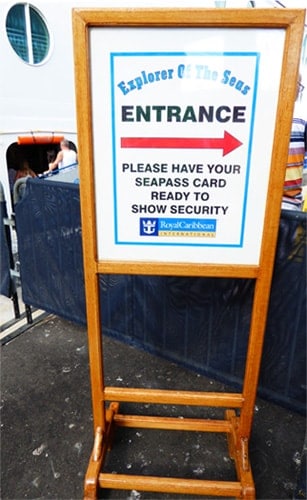
Navigating these boats is normally quite easy after a few days given the well-planned signage.
And finally a photo of the ‘Explorer of the Seas’.
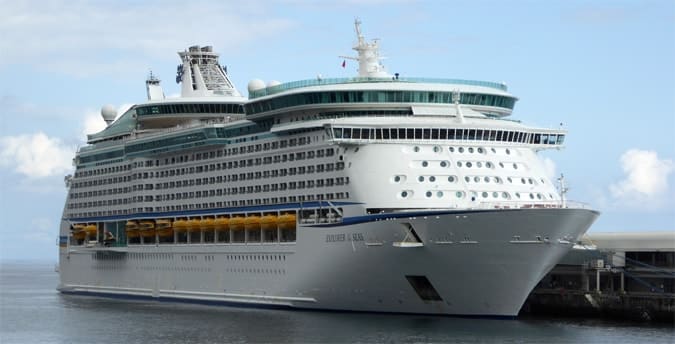
Dr Paul Symonds has a PhD in Wayfinding from Cardiff Metropolitan University in the UK. Paul works with the signage industry, airports and other locations providing wayfinding audits, consultancy and training.


